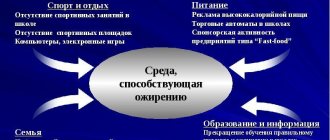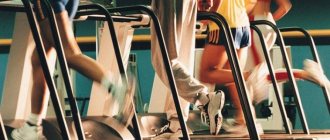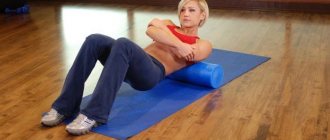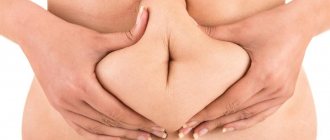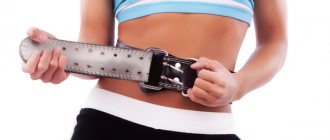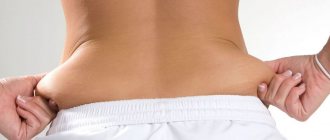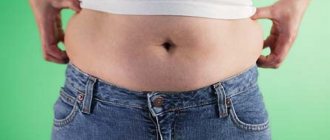Why do girls' bellies grow?
Women's body structure differs in many ways from men's. In adolescence, these differences become especially clearly visible. In girls, the stomach may stick out a little. This is considered normal, especially if you are overweight.
If the belly grows over time for an unknown reason, then this is a reason to consult a doctor, conduct a diagnosis, and possibly a course of treatment. Why do girls' bellies grow? Only a specialist can answer this after analysis and a thorough examination. It is impossible to draw preliminary conclusions in this case, because there are many reasons for this phenomenon.
The child's parents need to carefully monitor their child. If the excess weight goes away after following a diet, but the stomach still remains large, then you should immediately consult a doctor to avoid negative consequences.
enlargement of internal organs
The cause of an enlarged abdomen in girls may be a congenital pathology - enlarged internal organs. Usually changes occur not in all organs, but in several. The reason for this may be previous infectious diseases, injuries, or prolonged inflammatory processes.
This phenomenon is very dangerous for the child’s life, because if treatment is refused, the organ may not withstand it and rupture. Pressure may also occur on neighboring organs, causing them to become deformed and lose their functions.
There are cases when a slight increase in some of the insides can be considered normal. For example, the liver may extend beyond its normal size by 3 cm. This is typical for children 7 years old. At a later age, such a fact will be considered a deviation.
kyphosis
Closer to 7 years of age, a child may have problems with posture. This is due to rapid muscle growth and stress on the spine. In turn, such changes can lead to kyphosis, a phenomenon when the spine bends forward.
This is possible if the child has a weak bone frame. Incorrect posture when sitting at the table, uncomfortable furniture and lack of physical activity will only worsen the situation.
As a result of kyphosis, folds appear on the abdomen, and the abdomen itself protrudes significantly forward. This disease is also hereditary. If there has already been a case of illness in the family, then from childhood the girl should be taught to keep her back straight, play sports and monitor changes in posture.
abdominal dropsy
The accumulation of fluid in the abdominal cavity in girls, as in boys, can cause a significant increase in the abdomen. This phenomenon is called ascites. Abdominal dropsy cannot be called a full-fledged disease. This is a symptom or result of other serious diseases, including oncology.
Ascites also occurs as a result of:
- development of renal failure;
- dystrophy.
Abdominal hydrops can be a congenital pathology. To check whether abdominal enlargement is precisely this phenomenon, you need to lay the girl on her back and examine her navel. If it is convex, then you should go for ultrasound diagnostics.
Also, with this symptom, the skin near the navel thins and veins become visible.
Ascites can also occur due to intestinal obstruction caused by a neoplasm (malignant or benign).
neoplasms
One of the most serious reasons for an enlarged abdomen in a child is neoplasms in the abdominal cavity. They can be benign or malignant. A distinctive feature of this disease is that the abdomen grows unevenly, with some part of it protruding more strongly.
In this case, it is important to contact specialists as quickly as possible, undergo diagnostics and rule out the appearance of tumors of any kind.
The child's body differs from the adult's body in rapid growth and development. Among the stages of ontogenesis, the most important are intrauterine development and childhood. The process of formation of the sexual phenotype in a child occurs throughout the entire period of growth and maturation of the body, but the most significant in this regard are the period of sex formation in the fetus, which takes about 4 months, and adolescence. Puberty is an extremely complex process with significant changes in physical and neuropsychological development.
We often observe how a talkative, sincere and open child suddenly becomes harsh, irritable, and sometimes rude. This usually happens with 10-15 year old children. Not only their behavior changes, but also their appearance. They quickly stretch out, lose weight, become clumsy, and sometimes acne appears on their face. It is with children of this age that parents turn to a pediatrician about dizziness, fainting, and pain in the heart. In certain situations – and to a neuropsychiatrist.
What's wrong with the child - parents are perplexed: is the company influencing him, is he not getting enough sleep, is he getting little rest, is he sick? The child himself cannot understand the “new” that so suddenly washed over him. What happens in the body during adolescence? How to help a child cope with emerging difficulties and problems?
During adolescence, the transition from childhood to adolescence occurs. It is characterized by changes in both physical and neuropsychic development. During this period, a sharp hormonal change in the body occurs: the activity of the endocrine glands - the pituitary gland, adrenal glands, thyroid gland - increases, and the sex glands begin to function intensively.
For a girl, this is the time when she ceases to be a girl and begins to turn into a woman. Everyone goes through puberty, although not at the same time. This is an integral part of the growing process. Puberty brings physical, mental and emotional changes. The girl’s body becomes stronger and more developed, and her thoughts and feelings also change. There may be sudden mood swings. Today you can consider yourself the happiest person in the world, and tomorrow you can feel the most unhappy. During puberty, such sensations are normal.
The period of puberty is individual for each girl. For most girls, it occurs between the ages of 8 and 13 years. For some it comes a little earlier, for others a little later. Moreover, during puberty, changes occur not only in the genitals. The whole body is being rebuilt. It develops intensively, internal organs work intensively, the activity of the nervous system is restructured, and the psyche changes.
The period of puberty is a relatively long period of qualitative growth of a child’s body, its transition to a mature one. This development occurs unevenly, some processes are ahead of others, the harmony in the external appearance of the teenager, in the activity of his internal organs, in his mood, and behavior is temporarily disturbed. The growth of the limbs outpaces the growth of the body, movements become angular and awkward. This happens due to a lack of coordination on the part of the central nervous system. Along with this, muscle strength increases, especially towards the end of puberty. The intensive growth of the bone skeleton and muscular system is not always kept up with the development of internal organs - the heart, lungs, and gastrointestinal tract. The heart outpaces the blood vessels in growth, as a result of which blood pressure rises and, first of all, complicates the work of the heart itself. At the same time, the rapid restructuring of the entire body, in turn, places increased demands on the heart. And insufficient heart function leads to dizziness, blueness and coldness of the extremities. Hence the headaches, fatigue, periodic bouts of lethargy, and fainting due to spasm of cerebral vessels. With the end of puberty, these disorders usually disappear without a trace.
Intensive growth, a sharp increase in the activity of the endocrine glands, structural and physiological changes in the body significantly increase the excitability of the central nervous system and change the psyche of a teenager. This explains the oddities in behavior: apathy and an indifferent attitude to what is happening are suddenly replaced by very violent and energetic reactions to trifles. Emotions are mobile, changeable, contradictory: increased sensitivity is often combined with callousness, shyness with swagger. Sometimes there is a decrease in performance, neurotic reactions, irritability, and tearfulness.
New relationships between the sexes are emerging. Girls are becoming increasingly interested in their appearance. Boys strive to show their strength to girls.
Puberty begins when a gland called the pituitary gland sends a signal to the ovaries to begin producing a certain chemical. This compound is a hormone and is called “estrogen”. Estrogen causes many of the changes that occur in a girl's body during puberty.
For most girls, the first sign of puberty is a sharp increase in height. In less than a year, a girl can grow by about 7-8 cm. At 10-11 years old, the mammary glands begin to enlarge. The breasts become larger and fuller. Some girls' breasts begin to grow earlier than others. Some will have larger breasts, while others will have small breasts. Other physical changes are also noticeable during puberty. At the age of 11-12 years, pubic hair begins to grow. Hair also begins to grow under the arms and on the legs. The body takes on a softer and more rounded shape. The waist may decrease, and the hips will increase slightly. The girl may notice that spots of white, yellowish or colorless liquid appear on her underwear. Light-colored discharge is absolutely normal and indicates that the girl will soon begin regular menstruation. After the onset of such menstruation, the appearance of natural discharge throughout adult life is absolutely normal. If the discharge is causing you concern, you should definitely consult a doctor.
One of the most significant events during puberty is the onset of menstruation. This is a completely normal process and not dangerous to health. The onset of menstruation is considered timely no earlier than 10 years and no later than 15.
The appearance of the first menstruation only indicates the beginning of puberty. And although a girl can already become pregnant, the genitals and the entire body are not yet mature for sexual activity. The development of the female body ends by the age of 20-23.
What is menstruation? Menstruation is part of a regular process that occurs in the body of a girl (woman) and ends the cycle of preparing the female body for a possible pregnancy. In fact, within a few days, the inner lining of the uterine cavity (endometrium), which is not needed for the development of pregnancy, is rejected, with the formation of a blood-like fluid that is released from the uterus, and then through the vagina - and from the girl’s (woman’s) body. Taken together, all these phenomena are called the menstrual cycle.
The menstrual cycle begins from the first day of menstruation until the first day of the next menstruation. The duration of menstruation is from three to eight days. It's different for every girl. As a rule, there is more discharge at the beginning of menstruation, and less at the end. During the entire period of menstruation, a girl loses about 100 - 120 ml of blood. If menstruation is established, then it repeats every month after 21–35 days. A cycle is considered regular when menstruation appears at regular intervals, lasts the same number of days and with the same intensity.
At the beginning (about 1 - 1.5 years), menstruation is often irregular: it lasts 7 - 8 days, then disappears for several months. Nervous shock and severe physical pain can accelerate the onset of menstruation. Often the menstrual cycle is disrupted when moving from the lowlands to the mountains, from north to south. Exhaustive long-term work, severe overwork, sudden weight loss can cause the cessation of menstruation. The first menstruation is sometimes accompanied by poor general condition, weakness, pain or significant blood loss. Sometimes there may be a slight increase in temperature, diarrhea or constipation, and dizziness.
Some girls experience discomfort during menstruation, which is called menstrual pain. The pain can be dull, aching, cramping, and often a slight intensity is observed even before the onset of menstruation. They are felt in the lower abdomen, in the lower back, in the sacrum, and sometimes spread to the hips. The pain can be combined with nausea, vomiting, headache, and gastrointestinal upset. The causes of pain are varied. They can appear as a result of changes in the genital organs (inflammation, underdevelopment, abnormal position of the uterus), due to some chronic somatic and nervous diseases. In girls, painful menstruation is most often caused by some underdevelopment of the uterus. A small uterus with an inferior muscular layer, with a sharp bend anteriorly or posteriorly, an elongated and narrow cervix is filled with menstrual blood. To expel it, the uterus begins to contract strongly, which is accompanied by pain, sometimes excessively severe, with loss of ability to work. Treatment is usually aimed at eliminating the cause of the pain. A calm lifestyle and moderate exercise, which strengthen the nervous system and thereby help relieve menstrual pain, are essential. If menstruation is very painful and heavy, you should consult a doctor.
To control the quality of menstrual function, a girl needs to mark the beginning, end and duration of each menstruation on a calendar - keep a menstrual calendar.
If you feel well during menstruation, you can lead a normal lifestyle, continue to do morning exercises, and simple physical exercises. During this time, exercises involving jumping, cycling, and heavy lifting are prohibited. It is not recommended to skate, ski, take long walks, take a bath, or swim in the river or sea.
Strongly stimulating substances such as vinegar, mustard, pepper, horseradish, coffee, strong tea, and chocolate should be excluded from the diet during menstruation. Beer, wine and other alcoholic beverages should not be consumed, as due to increased blood flow this can lead to menstrual bleeding.
Particular attention should be paid to the timely emptying of the bladder and intestines, since their overflow leads to displacement of the uterus, which can additionally cause pain.
A girl should especially carefully monitor the cleanliness of her body during menstruation, since the inner surface of the uterine cavity bleeds during this period and turns into a wound surface, where, under favorable conditions, microbes can find an excellent nutrient medium. Therefore, during menstruation, it is important to change your underwear frequently, use sanitary pads and change them in a timely manner, be sure to wash yourself with warm boiled water at least 2 times a day, and take a shower.
How often should gaskets be changed? At the beginning of menstruation, when the discharge is usually heavier, you need to change the pad every 2-3 hours. Towards the end of menstruation, when the discharge usually decreases, the pads can be changed every 4-6 hours. You cannot use the same pad for more than 6 hours. With prolonged contact with air, menstrual blood becomes infected and begins to emit an odor. Therefore, it is necessary to change the gaskets regularly.
You should also take a bath or shower regularly because the sebaceous glands, especially on the face and chest, work more actively during puberty. The sebaceous glands secrete a fatty substance called sebum. If this oil clogs the pores of the skin and comes into contact with bacteria, acne may appear on the skin. For many, such acne is a characteristic sign of puberty (adolescent acne). Be sure to wash your face at least twice a day. Do not touch your face with unwashed hands or squeeze out acne. Otherwise, you can get infected and leave scars on your face. If normal hygiene measures do not help, then you can try lotion or cleansing wipes or anti-acne cream. If this does not help, you need to consult a cosmetologist or dermatologist.
Despite all the complex changes occurring in the body, the teenage girl is young and beautiful, and the world around her is huge and amazing. Parents and close people should help the girl feel the wonderful power in herself - the power of girlish charm, feel her transformation into a beautiful woman. Your daughter is already an adult and can decide for herself whether she needs to improve her appearance and her inner world. Just a year or two ago she was a girl, and now she is becoming a girl. These changes should make her proud: after all, what nature gave the girl is wonderful, all this will allow her to become a beloved wife and a happy mother over time.
Why does my child have a big belly after eating?
Parents often notice that their child’s health problems begin after eating. But why does a child have a big belly after eating? This can be a signal of many diseases and abnormalities.
One of the most harmless is poor metabolism. The stomach and intestines process food poorly, so the body needs more time to cope with the task. Meanwhile, the consumed food is stored in a food “reservoir” and awaits its turn.
This problem is not entirely harmless as it seems at first glance. Contacting a gastroenterologist will help improve nutrition, reduce the load on the intestines and internal organs and give them the opportunity to cope with the task on their own.
Disorders of the endocrine and immune systems can also affect the enlargement of the abdomen after eating. This is especially true for teenagers - girls 13 - 14 years old. Changes in hormonal levels and active growth of the body can cause disruptions in its rhythm, which in turn can cause abdominal growth, abdominal pain and poor health.
Failure of the pancreas can also be a serious cause. A girl’s body may react negatively to some components, such as gluten. Then enzymes will be produced weakly by this organ, which can lead to such consequences.
Frequent constipation is another possible reason for an enlarged belly in a girl. If a child goes to the toilet less than once in 2 days, then this is a strong argument in favor of caprostasis or constipation.
The cause may be bowel dysfunction or low physical activity. Constipation is also a concomitant symptom of many other gastrointestinal diseases.
If none of the symptoms apply, then the girl may be obese. As a result of this disease, not only the abdomen enlarges, but other parts of the body also change. The child wants to eat all the time and does not feel full. Treatment in such a situation will involve not only a diet, but also a visit to a psychologist.
How to lose weight for a 14-year-old teenager: girls and boys, as well as their parents
Only an experienced specialist can provide correct, competent disposal of excess kilograms. If the problem has not grown to universal proportions, you can try to cope on your own, but here you need the right approach. Limiting a child’s food without explanation is not the best way out of the situation. Most likely, he will not understand and will not accept such care, therefore he will resist in every possible way.
Trusting relationships and no unauthorized diets
Support and understanding during this period are very important for teenagers. It’s good if the mother helps the girl, and the father helps the boy. It is the parents who must pay due attention so as not to aggravate the problem. Older brothers and sisters usually make good helpers. But younger ones can also play their role: give the teenager the task of monitoring their healthy lifestyle.
The main thing is to avoid taking too drastic actions. You should immediately discard the use of various diets seen on TV or found on pages on the Internet. If Petya or Tanya became models after a week on the same water, then this is a deliberate lie that can cause serious harm to a growing body.
A hunger strike is not a solution. All it can bring is much more dangerous problems than a few extra pounds. After all, the body will not receive the trace elements, minerals, and vitamins it needs. It is necessary to ensure that the teenager does not follow such diets secretly. After completing them, there usually follows a period when the teenager eats everything in far from moderate quantities, which reduces the previously achieved result to zero. Severe fasting can lead to anorexia (hyperlink), and regular “raids” on the refrigerator can lead to bulimia (hyperlink). Neither one nor the other bodes well for the future.
Balanced diet
Prohibited Products
To quickly lose weight for a teenager at home, you don’t need to completely give up food. Some restrictions will still have to be made.
- Fast food should be completely excluded from the diet. Even if the teenager adores him, he will have to endure it. Parents should explain that by choosing hot dogs and hamburgers, he should at the same time say goodbye to his slim figure, and at the same time his health, forever.
- Soda cannot be consumed in any form. It doesn't matter if it's sweet or just mineral. It is optimal to switch to other drinks, for example, green or black tea, juices.
- Cakes, pastries, buns, pies, milk chocolate, candies and other “goodies” are allowed only on holidays, and even then in minute quantities.
- It is also better to postpone sausages, sausages and other sausages until better times. Even adults watching their weight are strictly not recommended to eat them. They have a high salt content (retains moisture), as well as fat, which easily accumulates on the stomach and sides.
It is best when the whole family, and not just the teenager, switches to proper, healthy nutrition. Even if the parents are not overweight, they should support the child and show that they are also ready to take part in his weight stabilization program.
Recommended food
Proper nutrition, contrary to misconceptions, can be tasty. It is not necessary to choke on oatmeal and water in the morning, although its benefits are difficult to underestimate. Recommendations from nutritionists will help make life enjoyable.
- Diversify your diet with plenty of vegetables. Zucchini, beans, beets, radishes, cucumbers, tomatoes, potatoes, eggplants, carrots, pumpkin, asparagus - it’s easy to prepare many different healthy dishes from all of this.
- Sweets can be replaced with fruits. Only in the vastness of Russia can you find apples, pears, plums, cherries, persimmons, cherry plums and much more. Do not forget about citrus fruits, as well as exotic fruits.
- Introduce steamed dishes into your diet. They are useful and easily absorbed by the body.
- It is advisable to minimize sugar consumption. It can be replaced with an herb called stevia.
Girls and boys who are overweight should maintain the correct ratio of proteins, fats and carbohydrates. The balance should look like a 1:4:1 ratio accordingly.
You should choose slow types of carbohydrates found in cereals, legumes, grains, pears, and apples. It is advisable to eat in small portions, up to five or six times a day. At school, snacks can be provided by preparing trays of supplies in advance. It is better to avoid canteen food, although it is believed that it is healthy by default.
To make it seem like there is more food, and you can get enough of even a small portion, put it in tiny plates. In this way, you can deceive your own brain, which will think that you have eaten a lot and the feeling of hunger will go away.
Water is the basis of life
No matter how trivial it may sound, many do not understand how important this liquid is for humans. With its deficiency, hair and nails become brittle, and the skin begins to peel off. One and a half or two liters of water, including tea, juice and even soup, is something any teenager can handle without forcing himself.
You need to drink a glass of water in the morning on an empty stomach, while the body has not yet fully woken up. You can add half a teaspoon of honey and a slice of lemon to it, so the beneficial effect will be much stronger. This is indicated for small children, adolescents and adults, regardless of gender.
Activity: movement towards victory over oneself
Intensive sports activities are given to few people. There is nothing good in exhausting your body with inhuman loads, so you shouldn’t immediately start lifting a barbell or horizontal bar, not to mention running for many hours. Leave such efforts to professional athletes, and just think about what a teenager likes most. Swimming, tennis, football, dancing, cycling - any activity will do.
- Gradually teach your child to do morning exercises or exercises at other times. A few simple exercises for fifteen to twenty minutes are quite enough.
- It doesn't hurt to skip the elevator if you live in an apartment. This excellent workout will be guaranteed at least twice a day, five days a week, while walking to and from school.
- Regular cycling trips can be organized in summer, spring and autumn. In winter they are replaced with skis or skates, and in bad weather they can just go for a walk.
- It is not necessary to dance with a coach or group. All you have to do is turn on your favorite track at home and your impromptu gym is ready. New movements can be easily found on the Internet.
An enterprising person who really wants to lose weight will definitely come up with a lot of different activities that will unobtrusively force him to move, and not sit in front of the monitor all day. Even helping parents with cleaning is good daily exercise.
Three main rules for losing weight
No laziness!
Many teenagers, even realizing that they are overweight, put off exercise and proper nutrition “for later.” Every time they promise themselves and their parents that they will start on the first of the month or on Monday before it is too late. If you start the process, you can end up with not only an unaesthetic appearance, but also a real bunch of health problems. Every year they will grow, like a snowball rolling down a mountain. Therefore, it is worth throwing away laziness, starting on Wednesday or on the twenty-third, that is, as soon as you realize the problem.
Motivation or “magic kick”
Many adults, not to mention teenagers, cannot find good enough reasons to take care of themselves, their bodies, to get them in shape. Motivation is the very thing that gets you off the couch and makes you drag your bike from the ninth floor down the stairs.
You should set yourself a simple and understandable goal, and then move towards it gradually. A teenager can have a huge number of such aspirations: entering a military or sports school, being liked by peers, improving status in a team, achieving certain results.
Healthy sleep
After a hard day, the body, especially a growing one, should get quality rest. Therefore, ideally, a teenager’s sleep lasts at least eight hours. This is the key to a healthy lifestyle. You should completely stop “night vigils” on social networks or playing your favorite games, this will negatively affect your condition the next day.
A tired person is unlikely to want “activities”; exercises will be postponed until later out of habit. This should not be allowed, therefore you need to pay special attention to sleep, set aside time for it and adhere to the established regime.
Komarovsky: a child has a big belly
One of the most popular pediatricians in Russia and neighboring countries is Dr. Komarovsky. Thousands of mothers listen to his advice, and videos with his participation are watched “to the gills.”
Komarovsky did not avoid the problem of the appearance of a large belly in a child. Like many other pediatricians, he recommends observing the child’s behavior, making a diagnosis and consulting a doctor.
In addition to serious pathologies, the doctor identifies the following reasons for an enlarged abdomen in a child:
- Various infections in the intestines. There are types of it that lead to an enlargement of the spleen or liver. Accordingly, the stomach in general increases.
- Poor nutrition, which can lead to bloating or poisoning.
- Some antibiotics cause bloating and enlargement of the abdomen for a while.
- Surgical pathologies: appendicitis, ulcers, intestinal obstruction.
It is important to ask your child how often he goes to the toilet. Especially in older children, because it is already difficult for parents to control this process. It is constipation that can cause an enlargement of the abdomen, and in the future negatively affect the child’s overall health.
How to remove belly fat for a 7 year old child?
To understand how to remove belly fat for a 7-year-old child, you must first start from his hobbies. Girls may be interested in dancing, aerobics, swimming, and various outdoor games in the form of quests. At this age, children can become very excited about an idea if they like it. Therefore, it is important to explain why you should adhere to the rules and monitor your health.
Also, the child must adhere to a diet and maintain hygiene in order to exclude infectious diseases. If you write out the menu in advance and hang it in a visible place, the child will know how he should eat.
A seven-year-old will definitely need control and cannot do without the help of parents. But he must be loyal, inconspicuous. At this age, the child’s psyche is very vulnerable, and it is psychological problems, along with physiological ones, that can cause the growth of the abdomen.
Suman Khatun
Today, Suman Khatun is considered to be the fattest girl in the world. She lives with her parents and siblings in a small Indian village. A few years ago, Suman was included in the Guinness Book of Records. At 6 years old, the child weighed 91 kg, while her height is only 104 cm.
Despite her worldwide fame, such “records” are difficult for girls to achieve. This is especially true for her family. The little Indian girl has a brutal appetite that has haunted her almost since birth. The girl eats everything she can get her hands on. Sometimes this is not enough for her. Everything the parents earn goes to buy food for Suman, so the family’s financial situation is almost critical. Sometimes there is no money left for the essentials. Then the rest of the family has to constantly starve due to lack of food.
How to remove belly fat for an 11 year old child
To remove belly fat for an 11-year-old child, you should develop the right diet. The body must receive many useful components. The plate must have a rotation of vegetables, meat, fish, fruits, etc.
The amount of fat should be limited. You should also adhere to these “golden” rules of nutrition:
- eat small portions 4 times a day;
- Breakfast should account for about 30% of calories;
- for dinner it is better to eat dishes made from vegetables and cereals;
- taboo - fast food, sweets and flour, soda, fatty and fried foods.
Also, meals should be diluted with inserts from gymnastic exercises.
How to remove belly fat for a 12 year old child
Girls at the age of 12 begin to worry more actively about their appearance. This can be used to achieve results. You and your parents can sign up for a swimming pool, rock climbing or aerobics lessons.
To remove belly fat for a 12-year-old child, you need to make his lifestyle active. Many children sit for hours in front of computer monitors, thereby earning themselves a lot of diseases. Parents should limit them in this.
Also, relatives should become role models. If there are those in the family who are obese, then this will not be an incentive to lose belly fat.
Other reasons for gaining excess weight
Teenage girls gain weight not only due to hormonal changes and lack of physical activity, but also for some other reasons. Lack of sleep, addiction to alcoholic beverages and sitting at the computer, especially at night, contribute to excess weight gain.
There are many different reasons that cause teenage girls to gain weight, but still the definitive reason has not been discovered. The reason probably lies in the combination of some known factors.
However, it is worth noting that in order not to gain weight during adolescence, girls should pay special attention to proper nutrition, a healthy lifestyle, and physical activity.
If these rules are followed, girls will go through the period of growing up without loss. Based on materials from https://zhenskoezdorovje.ru
How to remove belly fat for a 13 year old child
The question of how to remove belly fat for a 13-year-old child may have several different answers. At this age, the girl’s body changes. From now on, it can withstand heavy loads, so it would be rational to intensify training.
Special attention should be paid to the press. It should be pumped several approaches a day. You can also add strength training, swimming or race walking.
The main thing is to make sure that the child has no contraindications (hernia, cysts and other pathologies).
Among young people, such entertainment as hoverboards, roller skates or skateboards are very popular. This is a great workload and a wonderful hobby.
How to remove belly fat for a 14 year old child
You can remove the belly of a 14-year-old child using the same methods as in a 13-year-old child. A distinctive feature may be the perception of the need for exercise and proper nutrition. At this age, a rebellious spirit awakens and complexes appear. This is why you need to handle your child delicately.
You need to treat girls with special tact. They experience any changes in their appearance painfully, which can lead to depression.
If the cause of abdominal enlargement is physiological abnormalities or serious illnesses, then medical intervention cannot be avoided. The doctor will prescribe treatment tactics on an individual basis.
An enlarged abdomen in a child without an obvious reason is a symptom that should alert parents. It is imperative to consult a doctor, carry out diagnostics if necessary, and provide moral support to the child.
Jessica Leonard
However, the Indian girl received the title of the most well-fed relatively recently. Before her, the leading place belonged to the world-famous American Jessica Leonard. Few people have not heard of an 8-year-old child weighing 186 kg. At one time, she became the Guinness Book of Records record holder as the fattest girl in the world. She began to show a tendency towards obesity from early childhood. When she was one year old, the scales almost reached 30 kg, and after another year - up to 50 kg.
Jessica's diet consisted mainly of processed foods and fast food. As many hamburgers, fries, pizza, sauces and soda as possible... The concept of normal nutrition for a child did not exist, despite the fact that her mother tried several times to put her on a diet. The results were always disastrous. Eternal hysterics and indignation on the part of the daughter disarmed the parents. Over time, they came to terms with their child’s lifestyle and stopped trying to limit her food intake.
Naturally, the girl could not move normally. Even just getting up from the couch was a problem for her. All her daily activity meant only two things: watching TV and eating a new portion of junk food. She did not go to school, because she simply physically could not do it.
